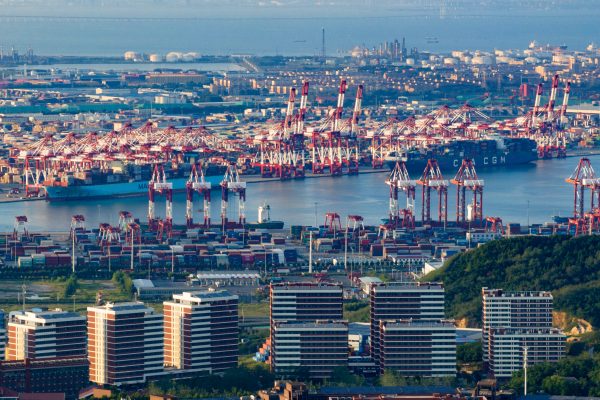As Lardy shows, direct subsidies to Chinese listed companies have grown substantially from 5 per cent of listed firms’ profits in 2010 to almost 14 per cent in 2015. Our own calculations corroborate this upward trend. From 2007 to 2018, total government subsidies for Chinese listed companies surged over sevenfold.
China’s industrial subsidies have caused considerable controversy both internationally and domestically. Trading partners have accused China of unfairly favouring its indigenous firms with subsidies, leaving foreign companies at a disadvantage in the race to lead the technologies of the future.
Within China, supporters argue that corporate subsidies are necessary for China to upgrade its industries and achieve technological self-sufficiency. But critics say that policymakers’ preference for large state-owned enterprises and national champions has disadvantaged private, small and medium-sized businesses.
The principal economic rationale for government subsidies is to fix market failures, but blindly doling out taxpayer money can lead to more market distortions. Research points to mixed findings on the effects of government subsidies on productivity, with studies finding positive, negative or no effects.
Since 2007, Chinese law requires listed companies to disclose information about the amount and reasons for government subsidies received over the previous financial year. We took advantage of this regulation and used Google’s BERT (an AI-powered natural language model) to categorise subsidies received by firms listed on the Shanghai and Shenzhen stock exchanges between 2007 to 2018 — excluding financial services firms.
But omissions and ambiguities in data disclosure when categorising subsidies reveals that Chinese firms frequently neglect to provide subsidy details despite disclosure requirements. Consequently, interpreting results based on categorised subsidies must be approached with caution, as these findings are applicable only to firms that disclose the specifics of the subsidies they received.
The empirical analysis we conducted included two stages. It first involved an estimate standard Cobb–Douglas production functions for each industry to calculate the total-factor productivity (TFP) for each firm in each year. The correlation between government subsidies and the estimated TFP was found by running two regressions.
The analysis does not support the view that the Chinese government consistently ‘picks winners’. There appears to be a negative correlation between subsidies and TFP, indicating that the government does not prioritise productivity when awarding subsidies. On the other hand, there is a strong positive correlation between subsidies and firm size — measured by total assets — and between subsidies and net profit.
These results suggest that subsidies are mostly allocated to larger and more profitable firms, even though they may have lower productivity.
There is also little evidence of subsidies leading to an increased TFP growth. At the aggregate level, there is a significant negative impact on TFP growth. Examining subsidy categories separately, research and development and innovation promotion subsidies do not appear to have a statistically significant positive effect on firms’ productivity growth. The same also applies for industrial and equipment upgrading subsidies.
But receiving a subsidy does seem to be correlated with an increase in firms’ employment. At the aggregate level, current subsidies appear to have a positive impact on current employment levels, while the prior year’s subsidies seem to have a negative impact on current employment. This suggests that firms could be strategically adjusting employment to qualify for subsidies.
In summary, the findings challenge the notion that aggregated or diverse types of direct subsidies lead to increased productivity among Chinese firms. While there is partial evidence suggesting that subsidies might bolster short-term employment, this could potentially undermine productivity by causing companies to retain excess staff and impeding optimal allocation of resources to the most efficient enterprises.
China has experienced a decrease in productivity growth. Our research suggests that current subsidy programs may not be the most suitable solution for China to address the economic slowdown caused by an aging population, a shrinking workforce and diminishing returns on capital investment.
Lee Branstetter is Professor of Economics and Public Policy at Heinz College, Carnegie Mellon University.
Mengjia Ren is an Economist at the Federal Energy Regulatory Commission. She obtained her PhD from Heinz College, Carnegie Mellon University.
Guangwei Li is an Assistant Professor at the School of Entrepreneurship and Management, ShanghaiTech University.
This piece is a summary of the authors’ December 2022 NBER working paper, ‘Picking winners? Government subsidies and firm productivity in China’, which has also been published by the Journal of Comparative Economics.

